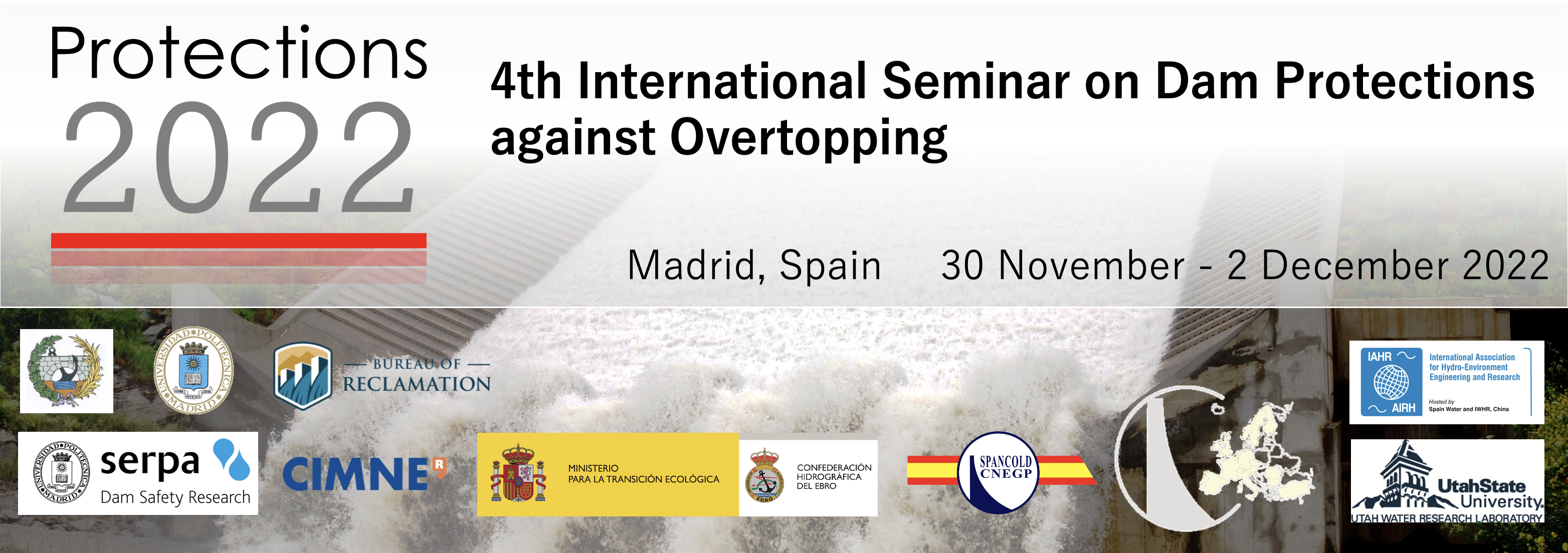Location
Madrid, Spain
Session
Session 2
Start Date
11-30-2022 12:30 PM
Description
Results from recent hydraulic testing of Articulated Concrete Block (ACB) systems have shown variations in the level of the ACB surface is attributed to the movement of an unconfined stone drainage layer. This movement appears to be exacerbated by thicker drainage layers, higher overtopping depths, and longer test flumes. While the apparent movement did not constitute “threshold of performance” as currently defined by ASTM D7276 and D7277, there was a desire to mitigate movement of the stone drainage layer and maintain conservatism in ACB design and construction. This paper will review the findings of Nadeau and Wedin’s paper from Protections 2018, which proposed an ACB system with a stone drainage layer stabilized with geocell to increase ACB performance under steady state and hydraulic jump conditions. A similar ACB system was recently designed and constructed to provide overtopping protection at Hollymead Lake Dam located near Charlottesville, VA. The system was selected for added conservatism to address overtopping depths approaching 1.6m (5.4-ft), hydraulic jump conditions occurring on the downstream slope, and other complex flow conditions due to site geometry. The authors believe this to be the first application of its kind. Design and analysis of the Hollymead Lake Dam ACB will be summarized and include a comparison of the factor of safety with and without the geocell stabilized stone drainage layer. The project was completed in November 2019. Details from construction will also be presented.
Creative Commons License

This work is licensed under a Creative Commons Attribution-Noncommercial-No Derivative Works 4.0 License.
Included in
First Application of Articulated Concrete Block Armoring with a Stabilized Stone Drainage Layer
Madrid, Spain
Results from recent hydraulic testing of Articulated Concrete Block (ACB) systems have shown variations in the level of the ACB surface is attributed to the movement of an unconfined stone drainage layer. This movement appears to be exacerbated by thicker drainage layers, higher overtopping depths, and longer test flumes. While the apparent movement did not constitute “threshold of performance” as currently defined by ASTM D7276 and D7277, there was a desire to mitigate movement of the stone drainage layer and maintain conservatism in ACB design and construction. This paper will review the findings of Nadeau and Wedin’s paper from Protections 2018, which proposed an ACB system with a stone drainage layer stabilized with geocell to increase ACB performance under steady state and hydraulic jump conditions. A similar ACB system was recently designed and constructed to provide overtopping protection at Hollymead Lake Dam located near Charlottesville, VA. The system was selected for added conservatism to address overtopping depths approaching 1.6m (5.4-ft), hydraulic jump conditions occurring on the downstream slope, and other complex flow conditions due to site geometry. The authors believe this to be the first application of its kind. Design and analysis of the Hollymead Lake Dam ACB will be summarized and include a comparison of the factor of safety with and without the geocell stabilized stone drainage layer. The project was completed in November 2019. Details from construction will also be presented.


